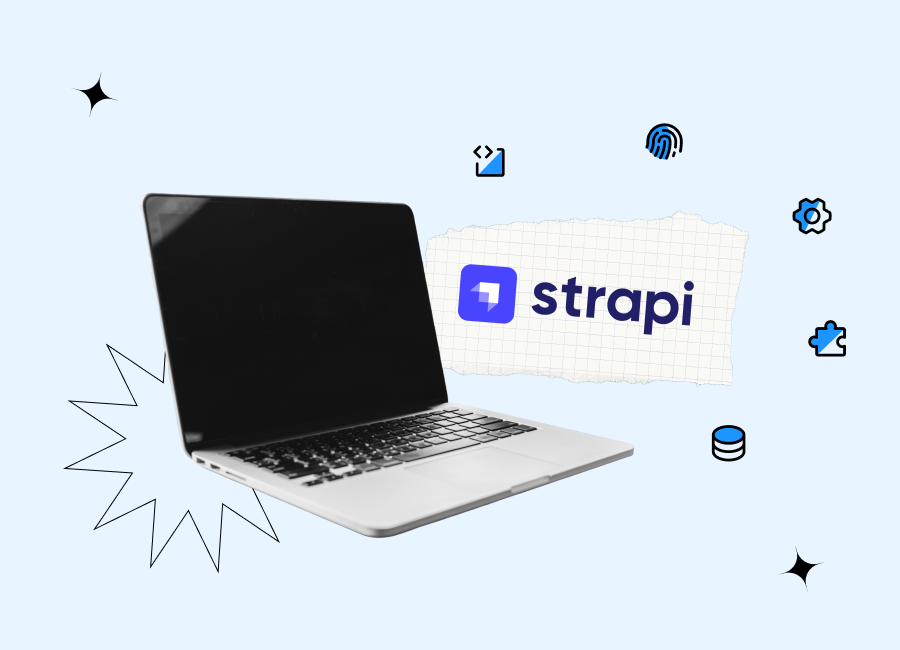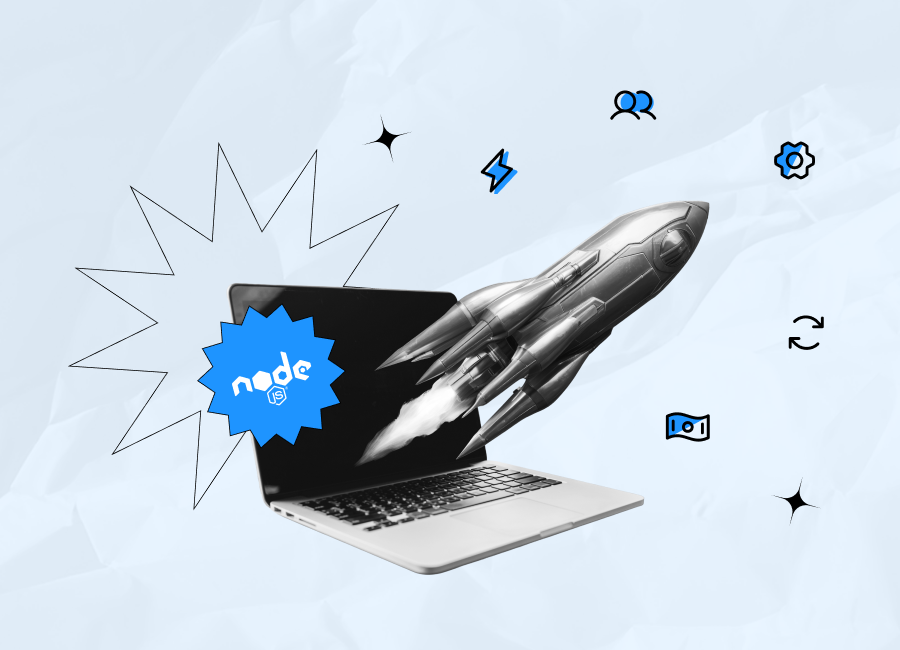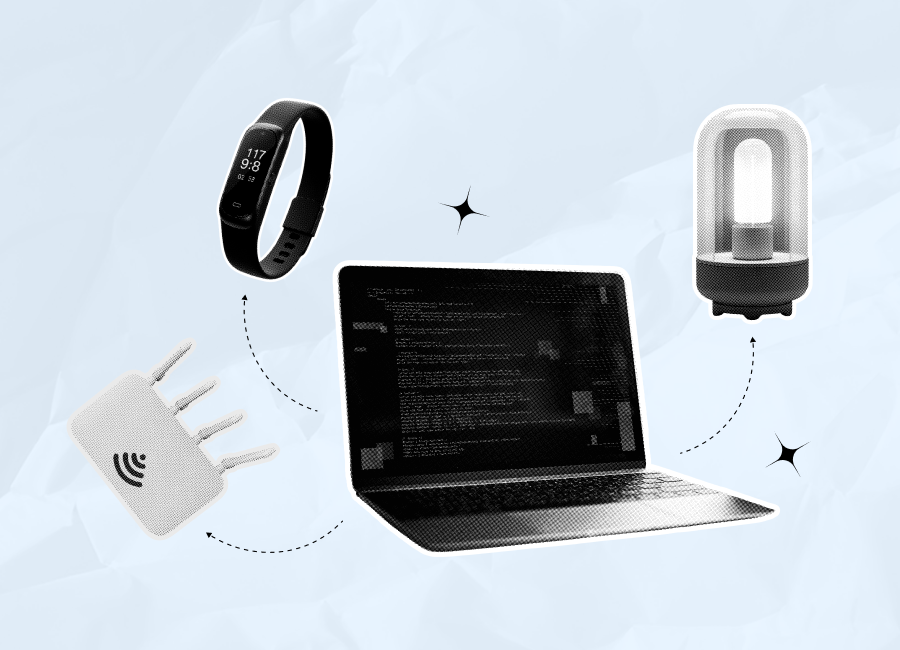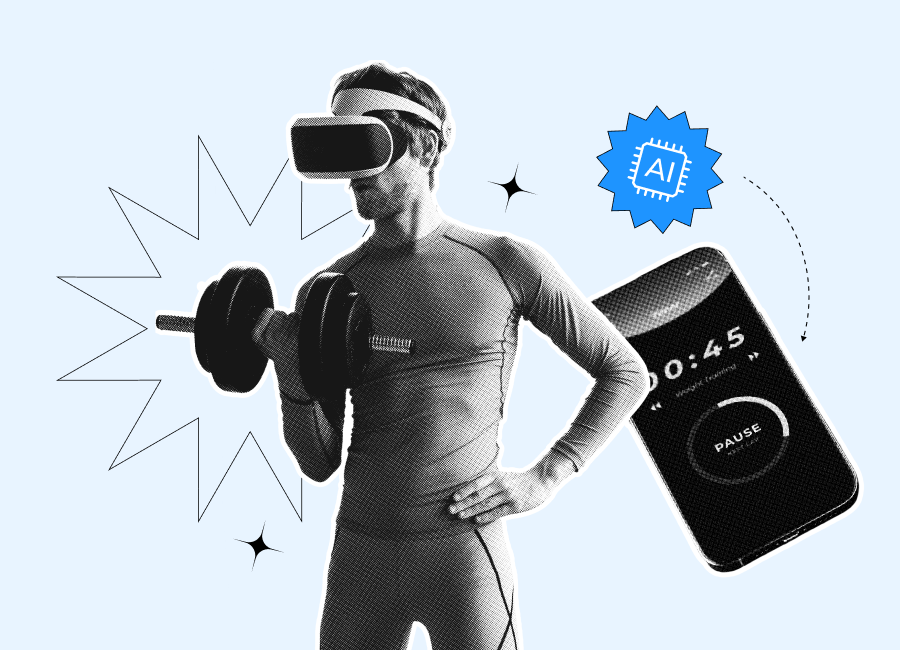While some people today mistakenly believe that the only type of wearables available today are smart watches and bracelets that you can use exclusively for counting your steps and calories, it is far from the truth. Today the range of telemedicine software features for wearables is significantly more comprehensive. In this article, we will consider the most popular functionality of telehealth solutions and their role in the healthcare industry.
If you are interested in building a healthcare software product for a wearable device, this blog post will be of great use for you.
Telehealth software for wearables: Market overview
The world observed one of the biggest jumps in demand for telemedicine products and healthcare software development services during the first wave of COVID-19 lockdowns in 2020, when many people lost access to traditional medical services. Since then we have seen stable growth in the telemedicine market. It was valued at $70.4 billion in 2021. Experts believe that by 2026, this figure will hit the $168.4 billion mark.

The market for healthcare wearables is growing as well. While its volume in 2021 was $21.3 billion, it is expected that with a CAGR of over 28% in the period 2022-2030, that figure will rise to nearly $160 billion. The demand for home healthcare and remote patient monitoring solutions is expected to have the strongest impact on this market growth.
The most popular types of wearables used in healthcare are:
- Smartwatches;
- Fitness bracelets;
- Biosensors;
- Wearable ECG monitors; and
- Blood pressure trackers.

Among the key factors boosting the popularity of healthcare software for wearables is the increasing need for high-quality telemedicine services, prompted by a shortage of medical staff in many regions and the challenges associated with getting access to traditional healthcare services.
It is important to understand that software development always requires financial investments from the side of medical institutions and organizations; however, the solutions created as a result can significantly reduce operational costs and streamline many routine tasks for the staff.
What Distinguishing Features are Important in Telemedicine Software for Wearable Devices?
When thinking about telemedicine software features for wearable devices, it’s important to recognize that each solution is unique and their features can differ significantly. However, some functionalities are common (in various combinations) for a major portion of such products.
Vital parameters monitoring
Depending on the exact type of wearable device, the set of parameters that can be tracked will differ. Usually, wearables help to measure heart rate, blood pressure, blood oxygen, temperature, and breathing. Telemedicine apps can receive data from a wearable device, save that information on the user’s mobile device, and send it to a healthcare institution.
Live chats
One of the easiest ways to communicate with doctors and medical staff is to contact them via online chats. Your solution can integrate a chat feature for quick questions related to ongoing treatment or conduct full-scale consultations with doctors.
Video calls
Video conferencing is one of the core technologies for telemedicine. During video calls, doctors receive access to all medical records stored in the system, boosting the accuracy of diagnosis and efficiency of the offered treatment.
Activity tracking
Fitness and wellness trackers count steps, track burned calories, and monitor overall daily activity. Usually, such telehealth software features are used by the wearer for self-monitoring and motivation. Devices with this type of functionality can remind users of the necessity to do physical exercise on a regular basis.
Notifications
Telemedicine software features can, directly and indirectly, influence the efficacy of treatment. For example, you can enrich your solution with a feature that will send the user a notification when they need to take medicine or make a call to the doctor.
Symptom measuring
Some wearable devices provide users with the possibility of tracking the intensity of their symptoms. Users can indicate when the pain has become worse, or vice versa, when they feel better. The scale of pain, together with automatically tracked timeframes, will help doctors to better understand the state of a patient.
Patient’s location tracking
This feature is particularly important for solutions intended for elderly people and people with mental impairments. Wearables powered with GPS tools can help medical staff and relatives detect the location of a person in real-time.
Benefits of Creating Telemedicine Software for Wearable Devices
The growing demand for telemedicine solutions is explained by the wide scope of benefits these products bring to doctors and patients. Let’s take a closer look at some of those. We’ll categorize the benefits of telemedicine software for wearables into three groups, based on the target clientele for these solutions: patients, physicians, and medical institutions.
For patients:
- Better accessibility
As has already been mentioned, today many people have limited access to traditional healthcare services, which can be a particularly serious issue for patients with chronic illnesses. However, special medical wearables used for remote monitoring will make it easier to receive necessary and timely help.
- Convenience in use
Thanks to modern technologies, interaction with wearables is organized via a mobile app that makes it simple and comfortable to introduce the required settings and view the recorded data.
- More affordable prices for medical services
Telemedicine services are usually cheaper than traditional healthcare services that require an appointment at a medical office or institution. This allows patients to save money and time they would otherwise have spent traveling.
- Improved diagnosis
By giving the healthcare professional a chance to check vital parameters in real-time, it’s easier to get an accurate diagnosis. As a result, patients can get the correct treatment faster and its effectiveness will be greatly enhanced.
For doctors:
- More convenient and reliable record-keeping
Telehealth software features for wearables allow a device to send collected data to a server at a medical institution, where doctors and nurses can get access to the information at any time.
- More efficient use of time
Thanks to automated paperwork and being able to monitor patients remotely, medical staff can save a significant amount of time while handling a larger number of patients daily.
For medical institutions:
- Increased revenue
As medical staff spends less time on daily routines and paperwork, a medical service provider can efficiently work with more patients, drawing more revenue without compromising care.
- Better team management
With remote medical services, the number of canceled appointments is reduced. As a result, it is much more comfortable to organize the work within the institution.
Have an idea for a telemedicine software solution?
Share it with us and we will help to transform it into a real product that will bring lots of benefits to end users!
Consider Cogniteq to Build Your Personal Telemedicine Software
Given all the advantages of telemedicine software for wearables, it only makes sense to assume this field will continue to develop in the future. Today could be exactly the right time to enter this market with an innovative software product that will help patients and doctors interact more easily and effectively.
At Cogniteq, our engineers have rich experience in providing IoT development services for many industries, healthcare being one of the fields on which we’re most focused. We work hard on staying up to date with all the latest telemedicine app development trends and the requirements of end users.

One example of telemedicine solutions developed by our team is PRISM Therapy Online. It is a web application intended to help users connect with therapists and get consultations fully remotely. Online consultations can be conducted via live chats and video calls. The aim of the app is to minimize the challenge for patients to find a suitable professional. When users come to the platform, they complete a free online assessment that helps the system to match people with the right specialists, based on their skills and qualifications. The platform also has features for booking appointments and making payments.
And that’s only one of the telemedicine projects that we have worked on. Maybe your healthcare software for wearable devices will be the next one in a line of successfully launched products built by our team.
Don’t hesitate to contact us! Let’s discuss what we can do for you!
FAQ
What are the main challenges associated with introducing wearable medical technology?
As is true of many other IoT solutions, the main challenges are related to data privacy, security, and regular compliance issues. All countries have their own medical data security standards. For example, in the US, it is HIPAA, while in Europe, the data processing is regulated by Directive 95/46/EC.
How much does it cost to develop software for a medical wearable device?
The price will depend on a number of factors, including the complexity of a solution, its functionality, and the size of the team required to build it. When you turn to a software development company and share your ideas and requirements, specialists will analyze them and provide you with estimates.
What are the key fields where wearable technology in healthcare can be applied?
Today a wide range of wearable devices is being used to increase the quality of medical service. Available options include but are not limited to smart bracelets, smart sensors, and GPS trackers. All in all, there are 4 main use cases of wearable devices in the healthcare industry: planned care, urgent care, self-care, and mental support.










































